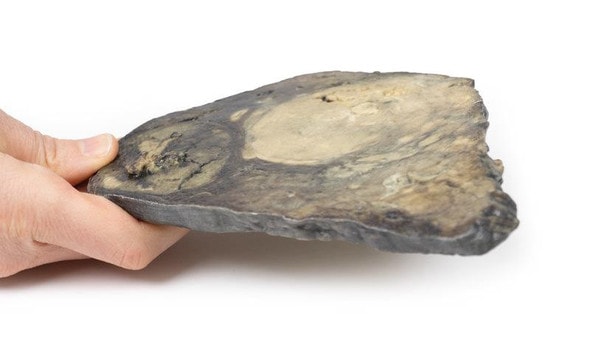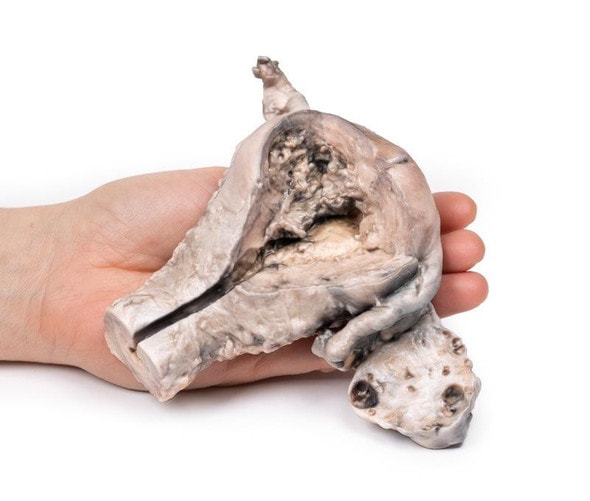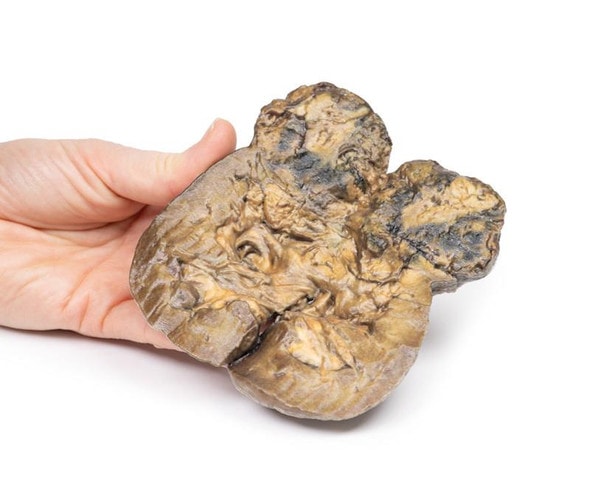Description
Developed from real patient case study specimens, the 3D printed anatomy model pathology series introduces an unmatched level of realism in human anatomy models. Each 3D printed anatomy model is a high-fidelity replica of a human cadaveric specimen, focusing on the key morbidity presentations that led to the deceasement of the patient. With advances in 3D printing materials and techniques, these stories can come to life in an ethical, consistently reproduceable, and easy to handle format. Ideal for the most advanced anatomical and pathological study, and backed by authentic case study details, students, instructors, and experts alike will discover a new level of anatomical study with the 3D printed anatomy model pathology series.
Clinical History
A 76-year old female presented to the emergency department sudden loss of consciousness. She had signs of a left sided cerebrovascular accident. She was intubated and her stroke was treated. During her admission in ICU she was noted to have a fixed mass in her left breast with palpable lymphadenopathy in her left axilla. She died from a respirator associated pneumonia.
Pathology
The specimen is the patient's left breast mounted to display the cut surface. Immediately beneath and attached to the skin is a large oval tumor mass 11cm in maximum diameter. The tumor is adherent to the underlying muscle. The tumor is not encapsulated and has a variegated cut surface with areas of necrosis, hemorrhage and cyst formation. This is a breast adenocarcinoma, which involved the regional lymph nodes.
Further Information
Breast carcinoma is the second most commonly diagnosed cancer in women worldwide. It is rare in women under 30 years of age but the incidence increases significantly after 30 with the peak occurring at 70 to 80 years. Incidence has been decreasing since the introduction of breast cancer screening programs, which offer mammography to women at risk and public awareness and education in self-examination of the breast. However, breast cancer remains one of the leading causes of cancer-related death in women.
Major risk factors for developing breast carcinoma include being of female gender (men account for 1% of breast cancer diagnosis), exposure to estrogen (early menarche, late menopause, exogenous estrogen), family history of breast cancer, being nulliparous, not breastfeeding, radiation exposure and obesity. Germline mutations in tumor suppressor genes, such as BRCA1, BRCA2, TP53, ATM, CDH1 and CHEK2 are linked with some hereditary cases of breast cancer.
Most breast neoplasms are adenocarcinomas that begin in the duct/lobular system as carcinoma in situ (DCIS). These malignancies are further subdivided according to their expression of estrogen receptors (ER) and Human epidermal growth factor 2 (HER2), which guides treatment. The most frequent sites if distant metastasis occur are bone, liver, lung and brain.
In developed countries with screening programs most patients present following an abnormal mammogram. Symptomatic patients present with a breast mass which is classically hard, irregular, immovable. Other clinical symptoms are axillary lymphadenopathy, overlying skin changes (erythematous or thickened skin, dimpled skin (peau d'orange) and nipple retraction. Symptoms of distant spread of disease may also cause patient presentations.
Treatment depends on the stage of the disease and the ER and HER2 status of the tumor. Surgical treatments include uni or bilateral mastectomy or breast conserving lumpectomy. Surgical axillary node clearance is performed in cases with positive nodal disease. Radiotherapy is given to patients with high risk of local recurrence. Patients with HER2 positive cancers are treated with targeted drugs, such as trastuzumab (Herceptin). Patients with ER positive tumors can be treated using anti-estrogen therapy, such as tamoxifen. Systemic chemotherapy is also used to treat some patients with breast cancer.
Advantages of 3D Printed Anatomical Models
- 3D printed anatomical models are the most anatomically accurate examples of human anatomy because they are based on real human specimens.
- Avoid the ethical complications and complex handling, storage, and documentation requirements with 3D printed models when compared to human cadaveric specimens.
- 3D printed anatomy models are far less expensive than real human cadaveric specimens.
- Reproducibility and consistency allow for standardization of education and faster availability of models when you need them.
- Customization options are available for specific applications or educational needs. Enlargement, highlighting of specific anatomical structures, cutaway views, and more are just some of the customizations available.
Disadvantages of Human Cadavers
- Access to cadavers can be problematic and ethical complications are hard to avoid. Many countries cannot access cadavers for cultural and religious reasons.
- Human cadavers are costly to procure and require expensive storage facilities and dedicated staff to maintain them. Maintenance of the facility alone is costly.
- The cost to develop a cadaver lab or plastination technique is extremely high. Those funds could purchase hundreds of easy to handle, realistic 3D printed anatomical replicas.
- Wet specimens cannot be used in uncertified labs. Certification is expensive and time-consuming.
- Exposure to preservation fluids and chemicals is known to cause long-term health problems for lab workers and students. 3D printed anatomical replicas are safe to handle without any special equipment.
- Lack of reuse and reproducibility. If a dissection mistake is made, a new specimen has to be used and students have to start all over again.
Disadvantages of Plastinated Specimens
- Like real human cadaveric specimens, plastinated models are extremely expensive.
- Plastinated specimens still require real human samples and pose the same ethical issues as real human cadavers.
- The plastination process is extensive and takes months or longer to complete. 3D printed human anatomical models are available in a fraction of the time.
- Plastinated models, like human cadavers, are one of a kind and can only showcase one presentation of human anatomy.
Advanced 3D Printing Techniques for Superior Results
- Vibrant color offering with 10 million colors
- UV-curable inkjet printing
- High quality 3D printing that can create products that are delicate, extremely precise, and incredibly realistic
- To improve durability of fragile, thin, and delicate arteries, veins or vessels, a clear support material is printed in key areas. This makes the models robust so they can be handled by students easily.


















